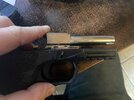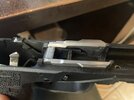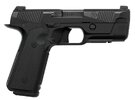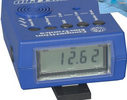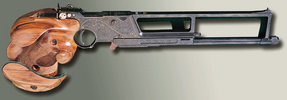I do think bore axis is a thing. How much of one I suppose is up to the shooter and what they are used to and how much time they spend shooting with them. If all you shoot are guns with a higher bore axis, then you wont likely notice a thing. If all you shoot are guns with a lower bore axis, then I can't believe you dont/wont notice. I know I do, and its always been pretty obvious to me, especially at first when switching shooting a gun with a lower axis to one with a higher.
I have and shoot a lot of different guns regularly, 1911's, older, newer SIG P series, Beretta's, HP's, Glocks, etc. and since the bulk of my shooting is now with Glocks, the difference between them and the others is noticeable enough that I notice it right off with the first trigger pull. After that you settle right in and I don't really pay it much attention, but the faster and more reactively I shoot, I do notice that there is a difference in my speed and control. I know that I can shoot the Glocks faster, easier, and more naturally than the others, and Ive actually got more time in shooting those other guns than I do the Glocks.
I also had a Chiapa Rhino for a while and have a bunch of S&W revolvers, and there too there was a noticeable difference. The Chiapa has less muzzle flip and shoot a couple of hundred rounds at an outing, and you feel it in your shoulders the next day. Dont get that with the Smiths.
I think this, like anything else, is more likely simply that you know what you know and are comfortable with it sort of thing, and anything else you don't have the time in and experience with is different/infereior. Not saying you cant shoot well with any of them, as you certainly can, but once you actually start putting the time and effort in with all of them and experience things at a level where you can see the differences, you now know and see the differences and can make a more informed decision as to whats what.


